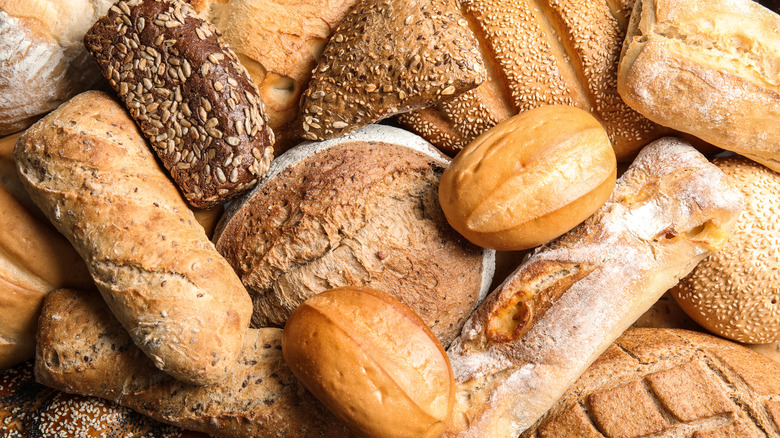Here's Why A Baker's Dozen Always Comes With 13
Order a baker's dozen at your local bakery, and you'll receive 13 goodies — not 12. We're all familiar with the phrase, it's widely understood that the term doesn't actually amount to a dozen. What's not widely understood is why this is even a thing in the first place.
Surely no one's complaining about this dozen-plus-one deal, but you might wonder out of pure curiosity — what's with the extra baked good thrown in there? Is it just some quirky baker thing about the number 13? Do they toss in an extra for good luck, or are they all just really generous people? Why isn't a baker's dozen ... a dozen?
It turns out there's a whole history lesson behind this peculiar custom; one that involves King Henry III, lots of bread, and a fear of flogging. So grab a snack and put those learning goggles on, because to understand the meaning behind a baker's dozen we've got to travel back nearly a thousand years to medieval England.
King Henry III lays down the law, a baker's dozen is born
In 13th-century England, a bit of a pattern began to emerge: bakers seemed to be cheating their customers by selling over-priced loaves of bread, charging people more than what the bread was technically worth in weight. King Henry III (who ran the country at the time) got wind of this and re-instituted a law to regulate the baking trade in 1266.
The statute, called the Assize of Bread and Ale, essentially determined a specific sale price of bread based on the price of the wheat used to make it. So if you were a baker selling bread in medieval England, the amount you could legally charge customers was based on the total weight of the bread rather than the quantity or number of loaves. If you short-changed someone, you could be fined, flogged, or sent to the stocks.
Understandably, most bakers wanted to avoid this fearful fate (which seemed a little harsh for selling some underweight bread). The problem? It was nearly impossible for bakers to predict or guarantee specific weights of their loaves. So, as a form of insurance to protect themselves from unintentionally breaking the law, bakers began adding an extra loaf (or two) to their customers' orders — long before anyone called it "a baker's dozen" — to compensate for any disparities in weight and keep themselves out of jail.
The role yeast plays in the history of a baker's dozen
If you've ever made your own bread before, you know that it's a tricky business. There are many factors outside of your control that can affect the whole process, and you can't always predict exactly how your bread will rise or bake. There's a reason why back in medieval England an extra "insurance" loaf was necessary in the first place, and it all comes down to yeast.
Yeast is what's responsible for the structure, lifting, and rising of the bread — ultimately, the way it reacts and behaves inside the dough determines how dense or airy that bread will be. But as a living organism, yeast is finicky and unpredictable by nature. It's easily affected by things like the temperature of the dough, the ratio of water used, and even the amount of salt present.
And aside from the obvious fact that many of those 13th-century bakers didn't have access to scales, this is exactly what made it so tricky for them to accurately determine the weight of their bakes. A baker could never be completely sure that two loaves of the same size weighed the same amount, because it all hinged on how much air the yeast allowed to develop within the dough.


